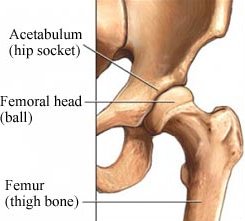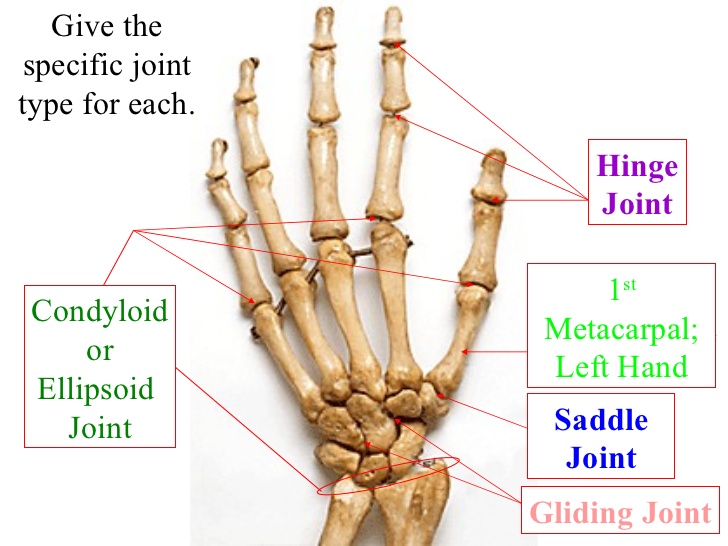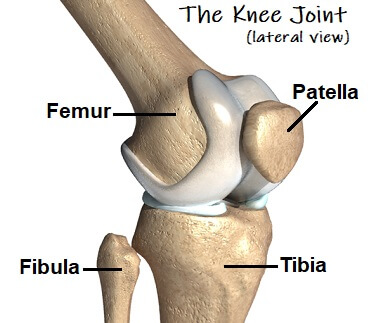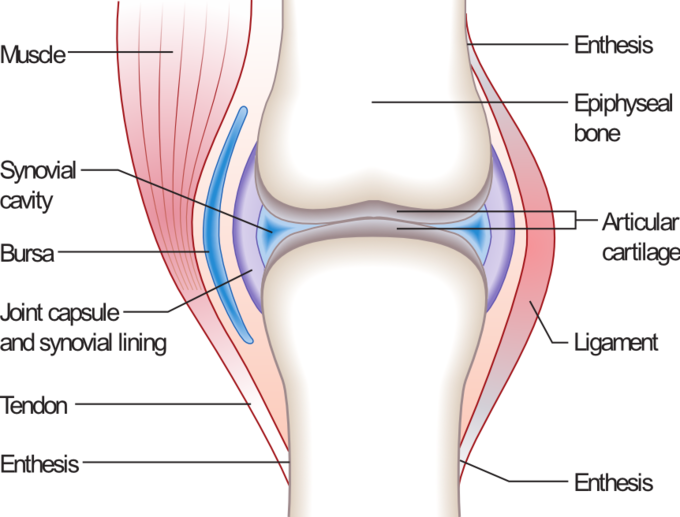
Written by: Claire Arcidiacono, ND
For further questions or concerns email me at carcidiacono@invitehealth.com†
Understanding the anatomy of joints is the key to understanding joint health. To start with joints can be described as movable or fixed. Fixed joints are those that don’t move. These include the joints in the skull. This series will be focusing on mobile joints and so we will concentrate on the anatomy of these types of joints. Freely moving joints allow us to do exactly that – move. Everything from walking to picking up a spoon and eating soup involves these joints. But not all movable joints are the same. There are 6 types of movable joints.†
The first type is called a ball and socket joint. This type of joint is exactly what it sounds like. The rounded head of one bone sits in the cup of another bone. With this type of joint there is motion in all directions. An example of this type of joint is the hip joint. Another example is the shoulder joint. (1). As you can see in the picture of the hip joint there is a round part of one bone (femoral head) that “spins” in the bowl part of the second bone (hip socket).(2)†

The next type of joint is called a condyloid joint. This joint allows motion that is without rotation such as in the jaw or in your fingers. (1) Please see the picture for an example of this joint and compare how the motion in this type of joint compares to the type of movement you are able to do with your hip.(3)†

A gliding joint is a joint that has limited motion such as in the wrists. In this joint one smooth surface slips over the other. (1) As you can see in the above picture this joint is very important for tasks that need our wrists to be flexible. (3)†
A hinge joint is probably what most people think of when they think of joints. In this type of joint, the 2 bones open and close in only 1 direction like the hinges on a door. The knee and elbows are the best examples of this type of joint. (1) Even though there is an example of a hinge joint in my last photo I wanted to post a picture of a knee joint since it is one of the most well-known examples of this type of joint and it is very easy to bend the knee and demonstrate the type of motion it is able to perform. (4)† 
A pivot joint is a joint where one bone swivels around a ring made by another joint. This is the type of joint seen in the neck between the first and second vertebrae. (1) Please see the picture for a better understanding of this type of joint. (5)†

The last type of joint is the saddle joint. While this type of joint allows back and forth and side to side motions it does not allow any rotation. An example of this type of joint is our very important thumb joint! (1) I’ve copied the earlier picture of the hand so you don’t have to scowl up to see it 🙂 (3)†

Now before I breakdown the individual joint components I just want to explain the different types of movements I just mentioned. Feel free to experiment by moving the joints I mention yourself! Some types of joint movements are easy to understand. For example there are joints that simply increase or decrease the angel between 2 bones. This is what occurs when you bend or extend your knee. Another type of joint motion that is rather self-explanatory is those joints that allow a rotation or circular motion such as in the shoulder. An example of a more complex type motion is in the cervical vertebrae which allow rotation without moving the bones. Lastly there are joints which include the wrist and ankle where the motion is carried out by sliding one broad and flat surface across another. (1)†
While joints are made up of bones there are also support structures that allow our joints to work properly. The most well-known part of the joints is the cartilage. This is what covers the bones and decreases the friction when a joint moves. Related to this structure is the meniscus which is a curved part of the cartilage in the knees and other joints. The synovial membrane lines the inside of the joint and seals the capsule. It also produces a clear sticky fluid called synovial fluid which acts to lubricate the joint. Both ligaments and tendons are a type of connective tissue that is used to attach one part of the joint to another. The ligaments attach one bone to another and the tendons attach a muscle to a bone. Lastly a bursa is a fluid filled sac that helps to cushion the friction in the joint. (6) Please see the attached picture. (7)†

All of these parts come together to help a joint work properly. Next week we will get into detail what types of testing a doctor will do when you have any sort of joint concerns.†
For further questions or concerns email me at carcidiacono@invitehealth.com†
REFERENCES
- https://www.betterhealth.vic.gov.au/health/conditionsandtreatments/joints
- https://www.daviddarling.info/encyclopedia/B/ball-and-socket_joint.html
- https://socratic.org/questions/what-type-of-joint-is-the-thumb-1
- https://www.knee-pain-explained.com/kneebones.html
- https://www.toppr.com/ask/question/the-pivot-joint-between-atlas-and-axis-is-a-type/
- https://www.urmc.rochester.edu/encyclopedia/content.aspx?contenttypeid=85&contentid=P00044
- https://pdhpe.net/the-body-in-motion/how-do-the-musculoskeletal-and-cardiorespiratory-systems-of-the-body-influence-and-respond-to-movement/skeletal-system/structure-function-synovial-joints/












